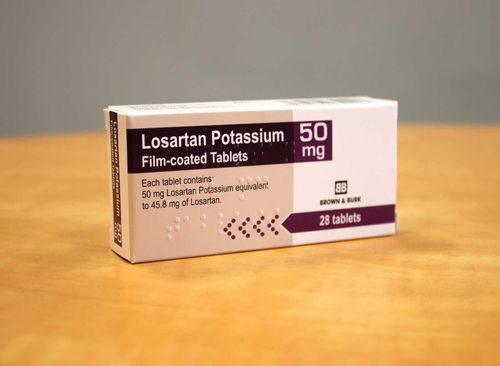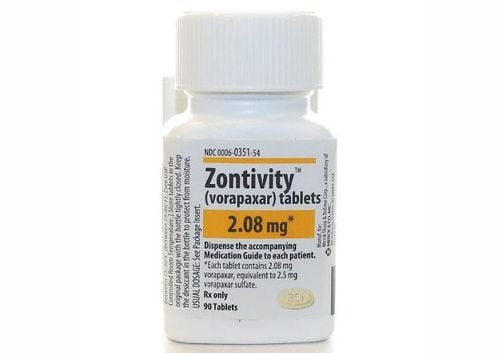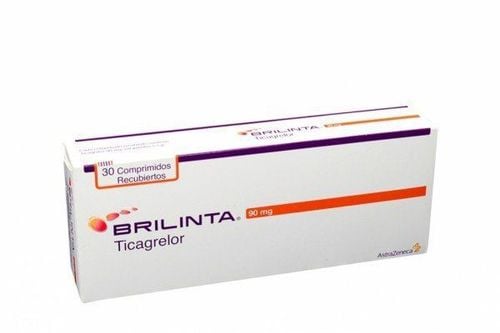This is an automatically translated article.
The feeling of having a stroke is not as painful as many people think. But it often comes on suddenly and causes most patients to lose the ability to process and control their body's actions. If not detected and handled immediately, it can lead to extremely serious consequences.1. Learn about stroke
According to the National Stroke Association, stroke is the fifth leading cause of death in adults. It is also the leading cause of disability. However, because many people do not know the symptoms of a stroke, they may subjectively ignore and delay treatment.On average, an adult's heart beats about 100,000 times per day. With each beat, the heart pumps out blood rich in oxygen and essential nutrients that move through a network of blood vessels to the cells.
However, sometimes blockage or rupture of blood vessels occurs. This can affect the blood supply to certain areas of the body. When this happens to the vessels that supply blood to the heart muscle, it is called a heart attack. When this happens to the blood vessels in the brain, it's called a "cerebrovascular accident" or stroke.
2. How does it feel to have a stroke?
Most stroke symptoms come on very suddenly and are severe. If you think you or a loved one is having a stroke, look out for the following signs:Loss of ability to speak or understand; Difficulty walking or balancing; Drooping eyelids or numbness on one side of the face; Weakness or numbness on one side of the body; Difficulty seeing with one or both eyes; Severe headache. It is important to note that the symptoms of a stroke are usually painless. This makes many people subjectively ignore the symptoms and do not realize they are facing a potentially life-threatening emergency. So if you notice a sudden or pronounced onset of any of these symptoms, call 911 immediately.

Đau nhức đầu dữ dội là một trong các cảm giác bị đột quỵ
3. How can I tell if someone is having a stroke?
The National Stroke Association has suggested an easy strategy to help people assess if someone is having a stroke. If you suspect someone is having a stroke, be sure to rate the following FAST formula:F (FACE): Ask the person to smile and watch to see if one side of their face is sagging. are not? A (ARMS - Arms): Ask the person to raise both arms. Did they lose control causing an arm to slip downwards? S (SPEAKING - Speaking ability): Ask the person to repeat a simple phrase. Do they have a slur or a strange accent? T (TIME): If you observe any of these symptoms, it is time to call 911 immediately.
4. Feeling a stroke puts the body at what risk?
There are two main types of stroke: hemorrhagic stroke and ischemic stroke. There is also an external form known as a transient ischemic attack (TIA), or “mini-stroke”.4.1. Hemorrhagic stroke A hemorrhagic stroke occurs when a weak blood vessel in the brain bursts. This is the least common type of stroke but also the most deadly. According to the National Stroke Association, hemorrhagic strokes account for only about 15% of all cases, but have a mortality rate of up to 40%.
The amount of time that elapses before and when a stroke occurs is extremely important. The family needs to take the patient to a hospital or medical facility immediately so that doctors can stop the bleeding in the brain and perform temporary first aid measures.
4.2. Ischemic stroke An ischemic stroke occurs when blood clots block a blood vessel in the brain. This is the most common type of stroke, accounting for 87% of all cases. In most cases, the doctor will give the patient strong drugs to dissolve the clot, thereby restoring blood flow to the brain. However, this measure needs to be handled quickly, the patient must be given medication within 4 to 5 hours of the onset of symptoms.
4.3. Transient ischemic stroke (TIA) is similar to an ischemic stroke with similar causes and symptoms. The difference is that in this condition, the clot will dissolve on its own and all symptoms will disappear within 24 hours.
Although not a stroke, an ischemic attack should be diagnosed and treated seriously. Experiencing a transient ischemic attack is a clear warning sign that you may be at high risk for a stroke. It is estimated that 1 in 3 people who undergo a TIA will experience an ischemic stroke within the following year. Usually, a stroke occurs days or weeks after a transient ischemic attack.

Thiếu máu não thoáng qua là cảm giác đột quỵ sẽ hết trong vòng 24 giờ
5. When to see a doctor?
As soon as you feel a stroke, it's important to get to the emergency room as soon as possible, regardless of the type of stroke you've had. According to the American Stroke Association, for every minute the brain is ischemic, about 2 million brain cells die from lack of oxygen and nutrients. When your brain cells die, the bodily functions controlled by those cells are also lost. This includes abilities such as walking, raising hands, or communicating.6. What happens after each stroke?
Experiencing a stroke can take a toll on a person both physically and mentally. Depending on the severity of the stroke, several body functions may be affected. Some abilities can be restored over time, while others do not.Doctors and care teams will often focus on stabilizing the patient's condition immediately after a stroke. They will also diagnose and treat any triggers that may have contributed to the condition, otherwise the risk of a recurrent stroke may be increased and more severe.
Going through a stroke can be a scary experience for many people. But if you master how to recognize symptoms and are willing to seek help when needed, you still have a good chance of improving and restoring your health.
Stroke usually occurs suddenly with local symptoms and lasts more than 24 hours or worse, death within 24 hours. Therefore, stroke needs urgent detection to have timely emergency therapy as well as early rehabilitation to reduce pain. Currently, patients with post-stroke pain can go to the Rehabilitation Department - Vinmec International General Hospital for physical therapy and rehabilitation. The faculty has the strength of rehabilitation for patients after orthopedic trauma surgery, cardiac - thoracic surgery, stroke and pediatric respiratory rehabilitation.... In particular, Vinmec owns A team of specialists with Rehabilitation expertise combined with a Cardiologist with many years of experience and dedication will help patients recover quickly.
Please dial HOTLINE for more information or register for an appointment HERE. Download MyVinmec app to make appointments faster and to manage your bookings easily.
Reference source: healthline.com













